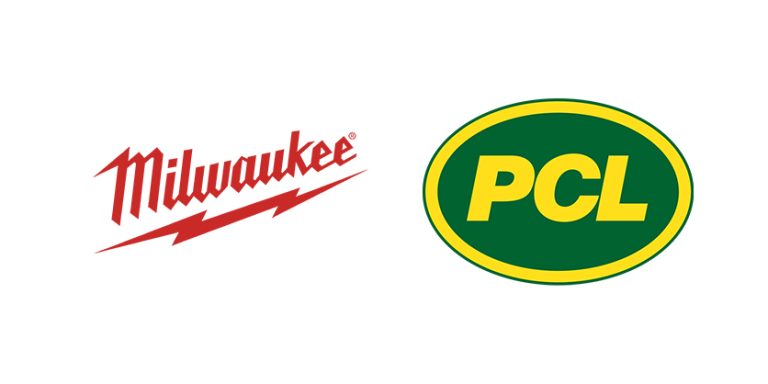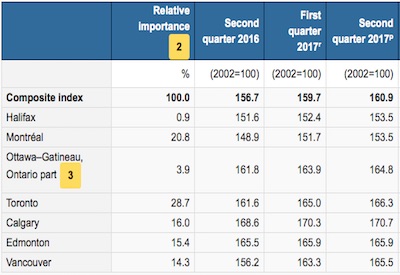Guide to the Canadian Electrical Code, Part 1 – A Road Map: Section 54

January 6, 2021
The Code is a comprehensive document. Sometimes it can seem quite daunting to quickly find the information you need. This series of articles provides a guide to help users find their way through this critical document. This is not intended to replace the notes in Appendix B or the explanations of individual requirements contained in the CEC Handbook**, but will hopefully provide some help in navigating the Code.
Section 54 — Community Antenna Distribution and Radio and Television Installations
Rule 54-000 states that this is a supplementary or amendatory section of the code and applies to community antenna distribution, equipment for the reception of radio and television broadcast transmission, and equipment employed in the normal operation of a radio station licensed by the Government of Canada as an experimental amateur radio station. The section does not apply to equipment and antennas used for broadcast transmission and for coupling carrier current to power line conductors. Appendix B and the CSA CEC Handbook provide additional explanations and diagrams.
Rule 54-002 provides definitions for special terminology used, including cable distribution plant, customer distribution circuit, customer service enclosure, multitap and blocking device, that need to be referenced when reading this section.
Rule 54-004 specifies that community antenna distribution is used to distribute radio and television frequency signals commonly known as cable TV (CATV), and that rules 54-100 to 54-704 apply. Where other than a coaxial cable wiring system is employed, the requirements of Sections 56 or 60 prevail.
Rule 54-006 notes that generally equipment under this section is not required to be approved as per Rule 2-024 unless specifically specified in this section.
Rule 54-008 specifies that rules 54-800 to 54-1006 apply to radio and television receiving equipment and amateur transmitting equipment.
Rule 54-010 explains that if insulated conductors or parts of community antenna distribution circuits are in a cable along with communication circuit conductors, then the rules of Section 60 – Electrical Communication Systems apply. Where protectors and grounding for the coaxial cables are required, then the rules of this Section 54 apply.
Community antenna distribution
Rule 54-100 requires that all conductors used in community antenna distribution must be coaxial cable and, if installed in buildings, be selected in accordance with Rule 12-102 3).
Rule 54-102 provides conditions and voltage and current limitations for using coaxial cable for supply to the customer service enclosure, and between two or more customer enclosures. Because the CATV cables enter buildings and are connected to televisions, radios and computers, the voltage and current levels must be limited to minimize shock and fire hazards.
In addition, cables and equipment must be bonded to ground, power blockers and locks installed on customer service enclosures, and any signal amplification must be energized by a class 2 transformer. Appendix B contains a sketch outlining the various limitations.
Rule 54-104 notes that, where installed in hazardous locations, all CATV circuits and equipment must also meet the requirements of Sections 18, 20 and 24.
Rule 54-106 specifies that if the CATV circuits are operated by a utility, within the scope of Section 60, they are not subject to electrical inspection. However, where transformers, amplifiers or current limiting devices are used, the junction with the electric supply is subject to inspection.
Rule 54-108 states that supports for cables on buildings must be suitable for the purpose.
Protection
Rule 54-200 requires that the outer conductive shield of coaxial cable be bonded to ground or be provided with a protective device close to the point of entry to a building, in case of accidental contact with lightning arrestor or insulated power conductors. Note also that the protector operation must not interrupt the building grounding system.
Rule 54-202 provides the specifications and location for a protector device. Appendix B notes for 54-200 and 54-202 provide a description of the point of entry to a building.
Grounding
Rule 54-300 details the requirements for grounding the outer conductor or protector of a coaxial cable.
Rules 54-302 and 54-304 outline that the installation of grounding electrodes and connections conform generally with Section 10. The purpose of grounding CATV coaxial cable is for bleeding off, to ground, excess voltage from accidental energizing or lightning strikes, and not for a low-impedance fault current path. Therefore, the driven length of a rod electrical can be a minimum of 2 m.
Conductors within buildings
Rules 54-400 to 54-408 provide requirements for CATV cables in conformance with Section 12 in terms of separation from other insulated conductors, cables in a vertical shaft, penetration of fire separations, prohibited placement in ducts or plenum chambers, except as permitted by Rules 2-130 and 12-010, and, installation of raceways in accordance with Section 12.
Equipment
Rule 54-500 requires that community antenna distribution amplifiers and other power sources be readily accessible, adequately ventilated, connected to the system ground with a minimum No. 6 AWG copper conductor, and be provided with a lock or similar closing device.
Rule 54-502 provides that exposed equipment and terminations be located in accordance with Rule 2-202, except in a joint use room, where a 900-mm separation from adjustable electrical equipment is required.
Rule 54-504 notes that non-powered or exclusively coaxial powered equipment are considered grounded if effectively connected to the grounded coaxial cable shield.
Conductors outside of buildings
Rule 54-600 specifies that overhead CATV cables on poles conform to the Canadian Electrical Code, Part III.
Rule 54-602, permits CATV cables to pass over buildings, provided a minimum distance, vertically from the roof, is maintained at 2.5 m. In addition, CATV cables may not be attached or run within 2.5 m vertically of a roof, except for garage or auxiliary buildings.
Rule 54-604 requires that CATV cables on buildings be separated from:
- insulated light or power conductors, not in cable or conduit, by at least 300 mm, or by a continuous non-metal-type raceway,
- combustible material, by being supported on glass, porcelain, or other insulating material, except where the outer conductive sheath of the coaxial cable is grounded, and
- other communication cables, attached to the same building, to prevent interference with maintenance operations, and not cause abrasion to the insulated conductors, strand, or equipment of the other system.
Rule 54-606 outlines that CATV cables entering buildings must pass through a non-combustible, non-absorptive insulating bushing, a metal raceway, or masonry.
Rule 54-608 requires a minimum separation of 2 m between CATV cables and lightning conductors on buildings.
Rule 54-610 requires CATV cables installed over or adjacent to swimming pools to conform to rules 68-054 and 68-056.
Underground circuits
Rule 54-700 requires that direct buried CATV cables be:
- suitably designed for direct burial,
- installed outside of the same vertical plane that contains differing cables other than communication cables, except when installed in accordance with the metal shield as per the last item in this list,
- maintained at a minimum 300 mm horizontal separation from differing cables, other than communication cables, except when installed in accordance with the metal shield as per the last item in this list,
- placed at a minimum depth of 600 mm, or 450 mm if rock bottom is encountered at a lesser depth,
- reduced to 450 mm depth for service wires under parkways and lawns,
- placed with a layer of sand 75 mm deep, both above and below the cable, if in rocky or stony ground,
- placed at a minimum depth of 900 mm under an area that is subject to vehicular traffic,
- reduced to 600 mm with mechanical protection consisting of a treated plank at least 38 mm thick placed over the cable, with first backfilling with 75 mm of sand or earth, containing no rocks or stones,
- placed in a conduit, suitable for earth burial, placed to facilitate cable replacement and to minimize traffic damage, or
- equipped with a metal shield, when in a common trench with random separation of insulated power cable operations at 750 V or less, and the CATV cables.
Rule 54-702 requires that underground raceway for CATV cables:
- be separated from the electric power system by not less than 50 mm of concrete or 300 mm of well-tamped earth,
- be located to maintain a minimum depth of 600 mm in areas subject to vehicular traffic and 450 mm in all other areas, or encased in concrete,
- not terminate in the same maintenance hole used for an electric power system, unless all requirements of Clause 6 of CAN/CSA-C22.3 No. 7 are adhered to,
- not be placed in the same raceway containing electric lighting, power, or Class 1 circuit conductors,
- be suitable for wet locations,
- enter the building above ground where practicable, and
- be sealed with a suitable compound, in such a way that moisture and gas will not enter the building or will be suitably drained.
Rule 54-704 permits the bushings or raceways required by Rule 54-606 to be omitted where the entire street circuit is run underground and the circuit is placed to prevent contact with electric lighting, power, or Class 1 circuits of more than 300 V.
Receiving equipment and amateur transmitting equipment
Rules 54-800 and 54-802 require that the lead-in conductor from an outdoor antenna to a receiving station or an amateur transmitting station be provided with a lightning arrestor, that will drain static charges from the antenna, except where the lead-in cable sheath is grounded between the antenna and the entrance to the building, or the antenna is grounded.
For receiving stations, the lightning arresters must be located:
- as near as practicable to the entrance of the cables to the building,
- outside the building, or
- inside the building between the point of entrance of the lead-in and the radio set or transformer, and,
- not near combustible material, nor,
- in a hazardous location.
Grounding for receiving equipment and amateur transmitting equipment
Rules 54-900 to 54-912 specify that grounding conductors must be:
- copper, aluminum alloy, copper-clad steel, bronze or other corrosion resistant material, and may be bare,
- securely fastened in place directly, but may be attached to the supporting surface without the use of insulating supports,
- protected where exposed to mechanical damage,
- run in as straight a line as is practicable from the lightning arresters or antenna mast, or both, to the grounding electrode, and
- connected to a grounding electrode, as specified in Section 10, but may be run either inside or outside the building.
Rule 54-914 specifies that the protective grounding conductor providing mast ground and lightning arrestor connections is in accordance with Section 10.
Rule 54-916 permits a single grounding conductor to be used for both protective and operating purposes. The disconnection of the operating ground must not affect the protective ground circuit.
Rule 54-918 requires that exposed non-current-carrying metal parts of radio and television equipment installed in basic, intermediate, and critical care areas of hospitals as defined in Section 24, be bonded to ground as per Rule 24-104(7).
Rule 54-920 requires that radio interference eliminators, capacitors and noise suppressors connected to power leads be protected from mechanical damage.
Rule 54-922 notes that masts, metal support structures, and antenna frames for receiving stations must be bonded to ground in accordance with Section 10.
Transmitting stations
Rule 54-1000 specifies that transmitters must be enclosed in a metal frame or grille, and thoroughly shielded or separated from the operating space by a barrier or other equivalent means.
Rule 54-1002 requires the bonding to ground of:
- all exposed metal parts of transmitters,
- external metal handles,
- controls accessible to the operating personnel, and
- accessories such as microphone stands.
Rule 54-1004 requires that all access doors of transmitters be provided with interlocks, that will disconnect all voltages in excess of 250 V, when any access door is opened.
Rule 54-1006 states that all audio-amplifiers located outside the transmitter housing be suitably housed and readily accessible and adequately ventilated.
In the next installment, we will be discussing Section 56 — Optical fiber cables
[i] Source: CSA C22.1:21, Canadian Electrical Code, Part 1 – Safety Standard for Electrical Installations. © 2021 Canadian Standards Association. Please visit store.csagroup.org. With the permission of CSA Group, material is reproduced from CSA Group standard CSA C22.1:21, Canadian Electrical Code, Part 1 – Safety Standard for Electrical Installations. This material is not the complete and official position of CSA Group on the referenced subject, which is represented solely by the Standard in its entirety. While use of the material has been authorized, CSA Group is not responsible for the manner in which the data are presented, nor for any representations and interpretations. No further reproduction is permitted. For more information or to purchase standard(s) from CSA Group, please visit store.csagroup.org or call 1-800-463-6727.
[ii] William (Bill) Burr is an associate member of the Canadian Electrical Code, Part 1, Technical Committee and formerly Chair of the Canadian Advisory Council on Electrical Safety (CACES), Chief Electrical and Elevator Inspector for the Province of BC & the Northwest Territories, Director of Electrical and Gas Standards Development and Director of Conformity Assessment at CSA Group. Bill can be reached at Burr and Associates Consulting billburr@gmail.com.
















